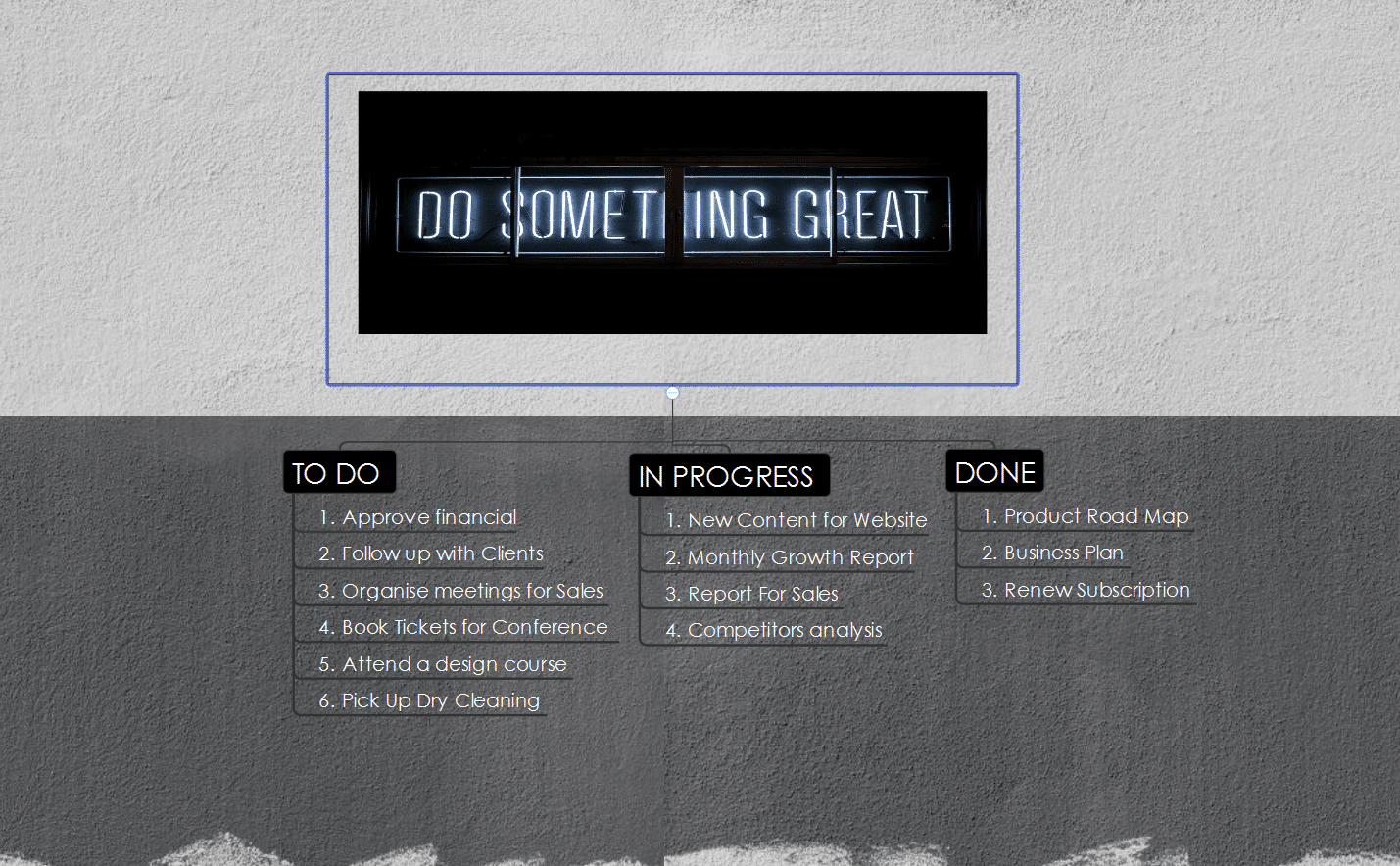We live very busy lives and as a result of it, our critical thinking suffers. When your day is fully filled up with tasks and activities that can hardly be put in a schedule, the organization is more important than ever. This is why some people succeed to do more in the same timeframe when others hardly succeed in anything.
What is Mind Mapping?
Mind mapping is a practice used by those who want to organize their thoughts and with it, their life. It is very simple. You map out all your thoughts about a chosen topic or idea, or even more ideas. When you have them on paper, you can organize everything easier and come up with solutions you wouldn’t think of otherwise.
‘’I am a writer, which means that organizing my time is real torture. Flexible work has some amazing benefits, but you can’t enjoy it if you don’t know how to organize. It was only when I learned mind mapping that I finally got the hang of it. Lucky for me that I did because without it, I’d have to seek another career,’’ –says Christina Grey, a writer at EssayOnTime.
The concept of mind mapping was first introduced by Tony Buzan. Buzan was an English author as well as a consultant, and his invention improved the lives of many people by this point. The interest showed almost instantly and people immediately noticed the greatness of this approach.
Reasons for Mind Mapping
Some say that mind mapping is the best thing that ever happened in this busy century. And while there might be some grand things that occurred, the concept truly aided the everyday lives of those who started implementing it. Nowadays, one of the most common and biggest problems is organizing your time due to the many tasks, possibilities, and obligations. People simply have more to do and the same amount of time to do it. Naturally, the only solutions are time organization or magic. And we all know that we can’t use magic to get more time.
If you just sit down and think about all the things you have to do during your day, you’ll start to see the point. Not only do you have the essential things that keep you alive and healthy, such as eating, sleeping, exercising, etc.; but you also have work, taking the children to school, going to school, hanging out with friends, and whatnot. Not to mention the tasks adults have at work and for work, and students have at school and for school. It is simply overwhelming just to think about it.
Now that you know the why, you can understand why mind mapping has reached such popularity – because when it comes to time, it is the magic you need to take control over yours.
How Does Mind Mapping Work?
You might think: ‘’I don’t have to draw maps to organize my time. I’ll just open my notepad or a word document and write some bullet points in it.’’ And while this might work for you, it is far from the most effective way to organize your life. It’s just one of the many ways to organize the schedule, but it doesn’t lay out your thoughts.
Without your thoughts on paper, you might be able to organize the tasks, but you won’t be putting your life in order. Failing to write down your thoughts will cause you to lose a lot of information in the process. That’s why mind mapping is better.
Mind mapping helps people not only to organize their daily or weekly tasks but aid and follow the natural process of thought. Thoughts can be overwhelming in a busy and even an ordinary day, and mind mapping helps you place them in the right shop.
Once you have a mind map in front of you, you can enjoy the advantage of having access to all information on a single piece of paper. You don’t have to roam your mind to organize the thoughts. You just follow branches and add your thoughts as you go.
It is an exciting and quite useful strategy.
The Magic of Using Mind Maps
People use mind maps for different reasons. Some use it for work, others for their life in general. Introducing some organization in your life is a smart idea and more often than not, essential and inevitable if you want to succeed. Generally speaking, the most common features of most mind maps are:
- Archives of completed tasks
- To-do lists for uncompleted tasks
- Projects and project breakdown
- Logs for brainstorming sessions
- Action and plan blueprints
- Layouts for projects and work assignments
- Document organization
- Lists of resources and tools
- Daily schedules
- Workout routine log
- Diet log
- Shopping log
Of course, these are just examples of what you can include in a mind map. Based on what you use the mind map for, you can add and remove literally everything, all with the purpose of organizing your busy, busy thoughts.
Download this iMindQ Mind Map Template
If you do decide to go for mind mapping, you can reap the many benefits it offers. Some of these include:
Improved memory and recollection of tasks
Busy people often forget about the simplest tasks. Whether it is the location of your car keys, an item from the grocery store, a document at work, or something more serious like picking up the kids, prepping for an important meeting, or an anniversary – mind mapping can help you remember. If this happens often despite your making of to-do lists, you really need to reconsider your strategy. Mind maps have the literal purpose to provide you with the information in a single glance. You can use colors to highlight the key things and tasks, spice it up with some important keywords, and simply get a tool for recollection of, well – everything. Read more.
Simplified prioritization process
Having many obligations in a day can easily make you overwhelmed and even a mind map won’t help if you have too much to do in a limited time. What it can do for you is provide you with an excellent and fast way of prioritizing, all so that you can finish the most important, imminent tasks and focus on the less important ones later.
Improved schedule
You surely want to put some things in your current schedule, but cannot find the time for that. You might be even putting things off, but with mind mapping, you can literally introduce new, healthy habits in your life. By adding these to a mind map, you can make a habit out of eating healthier, working out regularly, and even getting sufficient sleep – all by highlighting it and noting it down in your ‘thoughts map’.
How to Use a Mind Map?
Finally, and now that you know why a mind map is important and how it can help you, it is time to learn some tricks for using it. The software you use will come very handy, but if you want to do this on your own or need some general tips, here are the top six ways to do a great mind map:
Take a blank page and turn it sideways. Once you do, start at the very middle of this page to give yourself more space and freedom.
- Use pictures and images in the center
A single image can replace sentences and even entire texts, so you will need these in your mind map. To make it shorter and easier to understand and look at, use pictures and images in it, most importantly in its center. This will help you concentrate on the key thought.
Use colors and use them ALL OVER. Colors are as good for your brain as images and will help you focus better, remember better, and organize better. The more and the wiser you use them, the more vibrant you can make your map of thoughts. In addition, it will help you find the things you are looking for easily when you go back to the mind map for them.
- Make many branches and connect them
A mind map works in the following way: you make many branches, but some are the main branches and others are sub-branches of those branches. Connect all of these and don’t forget to link each branch type to the one before it. Link the main branch with the central picture or image, the second-level branch to the first-level branch, etc.
- Use curved lines for your branches
Instead of using straight lines, use curved lines to make it more interesting to look at.
Your goal is to add as little words to list your thoughts as you can. That’s why pictures are helpful, but when you need the wording to spice things up or present an idea more clearly, use keywords to give it some flexibility.
You don’t have to be a fan of using mind maps to understand its importance. Once people start using mind maps to organize their time, whether it is for personal or professional purposes, they find it to be an irreplaceable tool for better and more organized living. With mind mapping, you can actually have things done even if you failed to complete them before.
About the Author
Serena Dorf is an enthusiastic content writer in Los Angeles. She is thirsty for knowledge and is always on the lookout for amazing productivity tips to share with her readers. In her free time, she is reading classic American literature and learning Swedish. Feel free to connect with her on Twitter.




